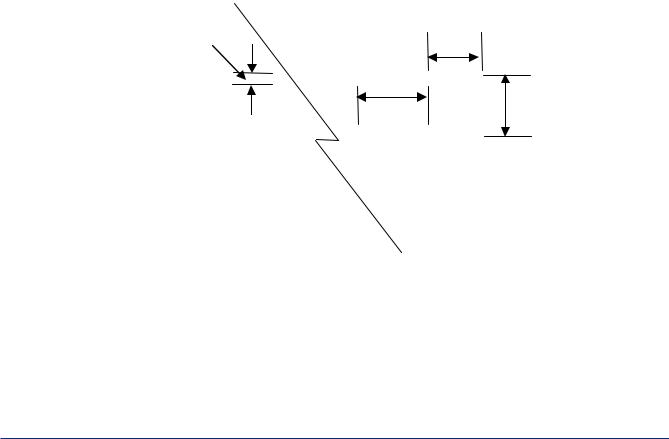
- •Textbook Series
- •Contents
- •Introduction
- •1 ICAO Annex 6
- •Introduction
- •Compliance with the Law
- •Operational Control
- •Safety
- •Alternate Aerodromes
- •Flight time
- •Flight Safety and Accident Prevention
- •Maintenance Release
- •Lighting of Aircraft
- •Navigation Lights
- •Questions
- •Answers
- •2 EU-OPS General Requirements
- •Applicability
- •Common Language
- •Quality System
- •Accident Prevention and Flight Safety Programme
- •Additional Crew Members
- •Ditching
- •Carriage of Persons
- •Crew Responsibilities
- •Responsibilities of the Commander
- •Authority of the Commander
- •Admission to the Flight Deck
- •Unauthorized Carriage
- •Portable Electronic Devices
- •Drugs and Alcohol
- •Endangering Safety
- •Documents to Be Carried
- •Manuals to Be Carried
- •Additional Information and Forms to Be Carried
- •Information to Be Retained on the Ground
- •Power to Inspect
- •Production and Preservation of Documents and Recordings
- •Leasing of Aeroplanes
- •Questions
- •Answers
- •3 Operator Supervision and Certification
- •Rules for the Certification of an Air Operator
- •Applicant Requirements
- •Aeroplane Maintenance
- •Variation, Revocation or Suspension of an AOC
- •Key Post Holders within the Operation
- •Main Operating Base
- •Aeroplanes
- •Other Considerations
- •Contents and Conditions of an AOC
- •Terminology
- •Operations Manual (OM)
- •General Rules for Operations Manuals
- •Ops Manual Amendments
- •Competence of Operations Personnel
- •Aeroplane Maintenance
- •Questions
- •Answers
- •4 Operational Procedures
- •Establishment of Procedures
- •Use of Air Traffic Control
- •Authorization and Selection of Aerodromes by the Operator
- •Meteorological Conditions
- •Approach and Landing Conditions
- •Aerodrome Operating Minima (AOM)
- •Commencement and Continuation of Approach
- •Instrument Departure and Approach Procedures
- •Noise Abatement Procedures
- •Routes and Areas of Operation
- •RVSM Operations
- •Operations in MNPS Airspace
- •Maximum Distance from an Adequate Aerodrome for Two-engine Aeroplanes without an ETOPS Approval
- •Extended Range Operations with Twin-engine Aeroplanes (ETOPS)
- •Establishment of Minimum Flight Altitudes
- •Fuel Policy
- •Carriage of Persons with Reduced Mobility (PRMs)
- •Carriage of Inadmissible Passengers, Deportees or Persons in Custody
- •Stowage of Baggage and Cargo and Galley Equipment
- •Passenger Seating
- •Passenger Briefing
- •Flight Preparation
- •ATS Flight Plan
- •Refuelling and De-fuelling
- •Crew Members at Duty Stations
- •Seats, Safety Belts and Harnesses
- •Smoking
- •Ice and Other Contaminants
- •Use of Supplemental Oxygen
- •Ground Proximity Detection
- •Occurrence Reporting
- •Questions
- •Answers
- •5 All Weather Operations
- •Introduction
- •Aerodrome Operating Minima: Operator’s Responsibility
- •Classification of Aeroplanes
- •Terminology
- •Take-off Minima
- •Visual Reference
- •Required RVR/Visibility
- •Figure 5.2 Exceptions
- •System Minima
- •Non-precision Approach
- •Minimum Descent Height
- •Visual Reference
- •Required RVR
- •No Decision Height Operations
- •Visual Reference
- •Category III RVR Requirements
- •Circling
- •Visual Approach
- •VFR Operating Minima
- •Special VFR
- •Questions
- •Answers
- •6 Aeroplane Equipment and Instruments
- •Introduction
- •Basic Requirements
- •Internal Doors and Curtains
- •First Aid Kits
- •First Aid Oxygen
- •Break-in Markings
- •Means of Emergency Evacuation
- •Cockpit Voice Recorders (CVRs)
- •Summary
- •CVRs – Operation, Construction and Installation
- •Flight Data Recorders (FDRs)
- •Summary
- •Equipment for Compliance with Flight Rules
- •Single-pilot IFR Operations
- •Altitude Alerting System
- •Standby Horizon
- •Aeroplane Lighting
- •Flights over Water
- •Long Range Flights
- •Weather Radar
- •Equipment for Operations in Icing Conditions
- •Machmeter
- •ACAS
- •Communications Equipment
- •Internal Communications
- •Audio Selector Panel (ASP)
- •Navigation Equipment
- •Instrument Procedures
- •Installation
- •Electrical Circuit Fusing
- •Windshield Wipers
- •Items not Requiring Approval
- •Seats and Harnesses
- •‘Fasten Seat Belts’ and ‘No Smoking’ Signs
- •Carriage and Use of Supplemental Oxygen
- •Crew Protective Breathing Equipment (PBE)
- •Crash Axes and Crowbars
- •Megaphones
- •Emergency Lighting
- •Emergency Locator Transmitter (ELT)
- •Survival Equipment
- •Questions
- •Answers
- •7 Crew, Logs and Records
- •Crew Composition
- •Commander
- •Relief of the Commander
- •Relief of the Co-pilot
- •System Panel Operator
- •Relief of System Panel Operator
- •Minimum Flight Crew for Operations under IFR or at Night
- •Conversion, Training and Checking
- •Type Rating
- •Conversion Training
- •Difference and Familiarization Training
- •Recurrent Training and Checking
- •Operator Proficiency Check
- •Line Checks
- •Emergency and Safety Equipment Training and Checking
- •Crew Resource Management (CRM) Training
- •Ground and Refresher Training
- •Aeroplane/STD Training
- •Pilot Qualifications to Operate in Either Pilot Seat
- •Recent Experience
- •Route and Aerodrome Qualification for Commander or PF
- •Operations on More Than One Type or Variant
- •Operation of Aeroplanes and Helicopters
- •Training Records
- •Cabin Crew
- •Journey Log
- •Operational Flight Plan (OFP)
- •Storage Periods
- •Flight and Duty Time Limitations
- •Questions
- •Answers
- •8 Long Range Flight and Polar Navigation
- •Navigation System Degradation
- •Course and INS Cross-checking
- •Unable to Continue in Accordance with ATC Clearance
- •Polar Navigation
- •Grid Navigation
- •Minimum Time Routes
- •Questions
- •Answers.
- •Introduction
- •Considerations
- •References
- •Transoceanic Navigation Problems
- •The Airspace
- •MNPS Authority
- •RVSM
- •Navigation System Requirements
- •Navigation System Serviceability
- •NAT Tracks
- •OTS Track Designation
- •OTS Changeover
- •Track Message Identifier (TMI)
- •Track Routings
- •Allocation of FLs
- •Domestic Routes
- •Polar Track Structure (PTS)
- •Other Routes within NAT MNPS Airspace
- •Route Structures Adjacent to NAT MNPS Airspace
- •Brest Oceanic Transition Area (BOTA)
- •Communications
- •SELCAL
- •Position Reports
- •Radio Failure in the North Atlantic Area
- •Initial Clearance
- •Transition
- •Meteorological Reports
- •Special Contingencies and Procedures
- •Strategic Lateral Offset Procedure (SLOP)
- •Deviation Around Severe Weather
- •Unable to Obtain Revised Clearance
- •Navigation System Failure
- •Errors Associated with Oceanic Clearances
- •Pre-flight and In-flight Procedures
- •Questions
- •Answers.
- •10 Special Operational Procedures and Hazards
- •Operating Procedures
- •Minimum Equipment List (MEL) and Master Minimum Equipment List (MMEL)
- •Ground De-icing and Anti-icing Procedures
- •The Clean Aircraft Concept
- •Bird Strike Risk and Avoidance
- •Hazard to Aeroplanes
- •Bird Strike Report
- •Incompatible Land Use around Airports
- •Noise Abatement
- •Questions
- •Answers
- •11 Fire and Smoke
- •Fire and Smoke
- •Fire in the Aeroplane
- •The Number and Location of Hand-held Fire Extinguishers
- •Smoke
- •Crew Protective Breathing Equipment (PBE)
- •Crash Axes and Crowbars
- •Overheated Brakes
- •Questions
- •Answers
- •12 Pressurization Failure
- •Pressurization Failure
- •Questions
- •Answers
- •13 Windshear and Microburst
- •Windshear and Microburst
- •Questions
- •Answers
- •14 Wake Turbulence
- •Wake Turbulence
- •Questions
- •Answers
- •15 Security
- •Security
- •Questions
- •Answers
- •16 Emergency and Precautionary Landings
- •Emergency and Precautionary Landings
- •Ditching
- •Precautionary Landing
- •Passenger Briefing
- •Evacuation
- •Megaphones
- •Questions
- •Answers
- •17 Fuel Jettison
- •Fuel Jettison
- •Jettison System Certification Requirement
- •Jettisoning Procedure
- •Safety
- •Questions
- •Answers
- •18 Transport of Dangerous Goods by Air
- •Transport of Dangerous Goods by Air
- •Technical Instructions
- •Labelling and Packaging
- •Loading Restrictions
- •Provision of Information
- •Emergencies
- •Training
- •Accident and Incident Reporting
- •Acceptance of Dangerous Goods
- •Inspection for Damage, Leakage or Contamination
- •Labelling
- •Questions
- •Answers
- •19 Contaminated Runways
- •Contaminated Runways
- •Contaminated Runway
- •Damp Runway
- •Wet Runway
- •Dry Runway
- •Contaminant Depth Limitations
- •Aquaplaning (Hydroplaning)
- •Braking Action
- •Coefficient of Friction
- •Performance Considerations
- •SNOWTAMs
- •Questions
- •Answers
- •20 Revision Questions
- •Questions
- •Answers
- •21 Index

Chapter
6
Aeroplane Equipment and Instruments
Introduction . . . . . . . . . . . . . . . . . . . . . . . . . . |
. . |
. |
|
. 73 |
Basic Requirements |
|
|
|
73 |
Internal Doors and Curtains . . . . . . . . . . . . . . . . . . . . . . . . . . . . . . . . . . . . 73 |
||||
First Aid Kits . . . . . . . . . . . . . . . . . . . . . . . . . . |
. . |
. |
|
. 73 |
First Aid Oxygen |
|
|
|
74 |
Break-in Markings . . . . . . . . . . . . . . . . . . . . . . . . |
. . |
. |
|
. 74 |
Means of Emergency Evacuation . . . . . . . . . . . . . . . . . . |
. . |
. . |
|
74 |
Cockpit Voice Recorders (CVRs) . . . . . . . . . . . . . . . . . . . |
. . |
. |
. |
75 |
Summary |
|
|
|
75 |
CVRs – Operation, Construction and Installation |
|
|
|
75 |
Flight Data Recorders (FDRs) . . . . . . . . . . . . . . . . . . . . |
. . |
. |
|
. 75 |
Summary |
|
|
|
76 |
Equipment for Compliance with Flight Rules . . . . . . . . . . . . . . |
. . |
. . |
|
77 |
Single-pilot IFR Operations . . . . . . . . . . . . . . . . . . . . . |
. . |
. |
. |
78 |
Altitude Alerting System . . . . . . . . . . . . . . . . . . . . . . |
. . |
. |
|
. 78 |
Standby Horizon . . . . . . . . . . . . . . . . . . . . . . . . |
. . |
. . |
|
79 |
Aeroplane Lighting . . . . . . . . . . . . . . . . . . . . . . . . |
. . |
. |
|
. 79 |
Flights over Water |
|
|
|
79 |
Long Range Flights . . . . . . . . . . . . . . . . . . . . . . . . |
. . |
. |
|
. 80 |
Weather Radar . . . . . . . . . . . . . . . . . . . . . . . . . |
. . |
. |
. |
80 |
Equipment for Operations in Icing Conditions . . . . . . . . . . . . . . |
. . |
. |
|
. 80 |
Machmeter . . . . . . . . . . . . . . . . . . . . . . . . . . |
. . |
. . |
|
80 |
Ground Proximity Warning System (GPWS) |
|
|
|
81 |
Terrain Awareness Warning System (TAWS) . . . . . . . . . . . . . . |
. . |
. . |
|
81 |
ACAS . . . . . . . . . . . . . . . . . . . . . . . . . . . . |
. . |
. . |
|
81 |
Communications Equipment |
|
|
|
81 |
Internal Communications . . . . . . . . . . . . . . . . . . . . . |
. . |
. |
. |
81 |
Audio Selector Panel (ASP) . . . . . . . . . . . . . . . . . . . . |
. . |
. . |
|
82 |
Continued Overleaf
71

1 |
|
Aeroplane Equipment and Instruments |
|
||
|
|
|
Instruments and Equipment Aeroplane 1
Navigation Equipment |
|
82 |
Instrument Procedures |
|
82 |
Installation . . . . . . . . . . . . . . . . . . . . . . . . . . . . . |
|
. 82 |
Electrical Circuit Fusing |
|
83 |
Windshield Wipers . . . . . . . . . . . . . . . . . . . . . . . . . . |
. |
83 |
Items not Requiring Approval . . . . . . . . . . . . . . . . . . . . . . |
. |
83 |
Seats and Harnesses . . . . . . . . . . . . . . . . . . . . . . . . . . |
|
83 |
‘Fasten Seat Belts’ and ‘No Smoking’ Signs . . . . . . . . . . . . . . . . . . |
|
83 |
Carriage and Use of Supplemental Oxygen |
|
84 |
Crew Protective Breathing Equipment (PBE) . . . . . . . . . . . . . . . . . |
|
. 86 |
Crash Axes and Crowbars . . . . . . . . . . . . . . . . . . . . . . . . |
|
86 |
Megaphones . . . . . . . . . . . . . . . . . . . . . . . . . . . . |
. |
86 |
Emergency Lighting |
|
86 |
Emergency Locator Transmitter (ELT) . . . . . . . . . . . . . . . . . . . . |
|
87 |
Survival Equipment . . . . . . . . . . . . . . . . . . . . . . . . . . |
. |
87 |
Questions . . . . . . . . . . . . . . . . . . . . . . . . . . . . . . |
|
88 |
Answers . . . . . . . . . . . . . . . . . . . . . . . . . . . . . . |
. |
90 |
72

Aeroplane Equipment and Instruments |
|
1 |
|
||
|
|
|
Introduction
In addition to the minimum equipment necessary for the issue of a CofA, the instruments, equipment and flight documents fitted to or carried in the aeroplane have to be adequate for the operation. As we have already seen, the operator includes the MEL, in the OM which allows the Commander to decide if a flight may be commenced or continued from any intermediate stop if any instrument, item of equipment or system becomes unserviceable. Additionally, the operator provides operations staff and flight crew with an aircraft operating manual, for each aircraft type operated, which contains the normal, abnormal and emergency procedures relating to the operation of the aircraft. The manual also includes details of the aircraft systems and of the checklists to be used.
Basic Requirements
An aeroplane has to be equipped with instruments to allow the flight crew to control the flight path of the aeroplane, carry out any required procedural manoeuvres, and comply with the operating limitations of the aeroplane in the expected operating conditions. Other equipment carried in the aeroplane is required for either safety, navigation or regulatory reasons.
Internal Doors and Curtains
The requirements for the security of the flight deck have already been discussed, but EU-OPS has additional requirements concerning doors and curtains. All aeroplanes with more than 19 passenger seats are required to have a lockable door between the passenger compartment and the flight deck. The door is to have a notice on it stating that entry is only permitted to crew members. Where a compartment not usually occupied by passengers has an emergency exit, the door leading from the passenger compartment to that area is to have an openable door. If passage through a doorway is required in the event of an emergency, the door (or curtain) is to have a means of securing it in the open position. Such doors (or curtains) are to have signs attached indicating that the doorway must be secured open for take-off and landing. The crew must have means of unlocking any door that can be locked by passengers (toilet doors).
First Aid Kits
EU-OPS requires an aeroplane to be equipped with accessible and adequate medical supplies (first aid kits) commensurate with the number of passengers the aeroplane is authorized to carry. The kits are required to be inspected regularly and replenished as necessary. Additionally, Annex 6 and EU-OPS require the carriage of an emergency medical kit, for the use of doctors or other qualified persons, for treating in-flight medical emergencies in aeroplanes authorized to carry more than 30 passengers, if the flight is 60 minutes or more from qualified medical assistance. The emergency medical kit must be dust and moisture proof and must be carried under security conditions, preferably on the flight deck.
Aeroplane Equipment and Instruments 1
Passengers |
First Aid Kits |
|
|
0 - 99 |
1 |
|
|
100 - 199 |
2 |
|
|
200 - 299 |
3 |
|
|
300 or more |
4 |
|
|
Figure 1.1: First aid kit requirement
73

|
1 |
|
Aeroplane Equipment and Instruments |
|
|
|
|
|
||||||||||
First Aid Oxygen |
|
|
|
|
|
|||||||||||||
|
|
|
|
|
|
|
|
|
||||||||||
|
|
|
|
(a) An operator shall not operate a pressurized aeroplane at altitudes above 25 000 ft, when a |
||||||||||||||
|
|
|
|
cabin crew member is required to be carried, unless it is equipped with a supply of undiluted |
||||||||||||||
|
|
|
|
oxygen for passengers who, for physiological reasons, might require oxygen following a cabin |
||||||||||||||
|
|
|
|
depressurization. The amount of oxygen shall be calculated using an average flow rate of |
||||||||||||||
|
|
|
|
at least three litres standard temperature pressure dry(STPD)/minute/person and shall be |
||||||||||||||
|
|
|
|
sufficient for the remainder of the flight after cabin depressurization when the cabin altitude |
||||||||||||||
|
|
|
|
exceeds 8000 ft but does not exceed 15 000 ft, for at least 2% of the passengers carried, but in |
||||||||||||||
1 |
|
|
||||||||||||||||
|
|
no case for less than one person. There shall be a sufficient number of dispensing units, but in |
||||||||||||||||
|
|
|
|
no case less than two, with a means for cabin crew to use the supply. The dispensing units may |
||||||||||||||
Aeroplane |
||||||||||||||||||
be of a portable type. |
|
|
|
|
|
|||||||||||||
|
|
|
|
|
|
|
|
|
||||||||||
andEquipment |
(b) The amount of first aid oxygen required for a particular operation shall be determined |
|||||||||||||||||
on the basis of cabin pressure altitudes and flight duration, consistent with the operating |
||||||||||||||||||
|
|
|
|
|||||||||||||||
|
|
|
|
procedures established for each operation and route. |
|
|
|
|
|
|||||||||
Instruments |
(c) The oxygen equipment provided shall be capable of generating a mass flow to each user of |
|||||||||||||||||
at least four litres per minute, STPD. Means may be provided to decrease the flow to not less |
||||||||||||||||||
|
|
|
|
|||||||||||||||
|
|
|
|
than two litres per minute, STPD, at any altitude. |
|
|
|
|
|
|||||||||
|
|
|
|
Break-in Markings |
|
|
|
|
|
|||||||||
|
|
|
|
Areas of the fuselage suitable for break-in by rescue crews in an emergency are to be marked by |
||||||||||||||
|
|
|
|
red or yellow lines, and if necessary they are outlined in white to contrast with the background. |
||||||||||||||
|
|
|
|
If the corner markings are more than 2 m apart, intermediate lines 9 cm × 3 cm are inserted so |
||||||||||||||
|
|
|
|
that there is no more than 2 m between adjacent markings. |
|
|
|
|
|
|||||||||
|
|
|
|
|
|
|
|
|
|
|
|
|
|
|
|
|
|
|
|
|
|
|
|
|
3 cm |
|
|
|
9 cm |
|
|
||||||
|
|
|
|
|
|
|
|
|
|
|
Not |
|
|
|
|
9 cm |
|
|
|
|
|
|
|
|
|
|
|
|
|
|
|
|
|
|
|||
|
|
|
|
|
|
|
|
|
|
|
|
|
|
|
|
|||
|
|
|
|
|
|
|
|
|
|
|
|
|
|
|
|
|
||
|
|
|
|
|
|
|
|
|
|
|
over 2 m |
|
|
|
|
|
|
|
|
|
|
|
|
|
|
|
|
|
|
|
|
||||||
|
|
|
|
|
|
|
|
|
|
|
|
|
|
|
|
|
|
|
|
|
|
|
|
|
|
|
|
|
|
|
|
|
|
|
|
|
|
|
|
|
|
|
|
|
|
|
|
|
|
|
|
|
|
|
|
|
|
|
|
|
|
|
|
|
|
|
|
|
|
|
|
|
|
|
|
Figure 1.2 Break-in markings
Means of Emergency Evacuation
Where the sill height of an emergency exit is more than 1.83 m (6 ft) above the ground with the landing gear extended, or 1.83 m above the ground after an undercarriage collapse, the exit is to be fitted with a means to enable passengers and crew to reach the ground safely in
74
